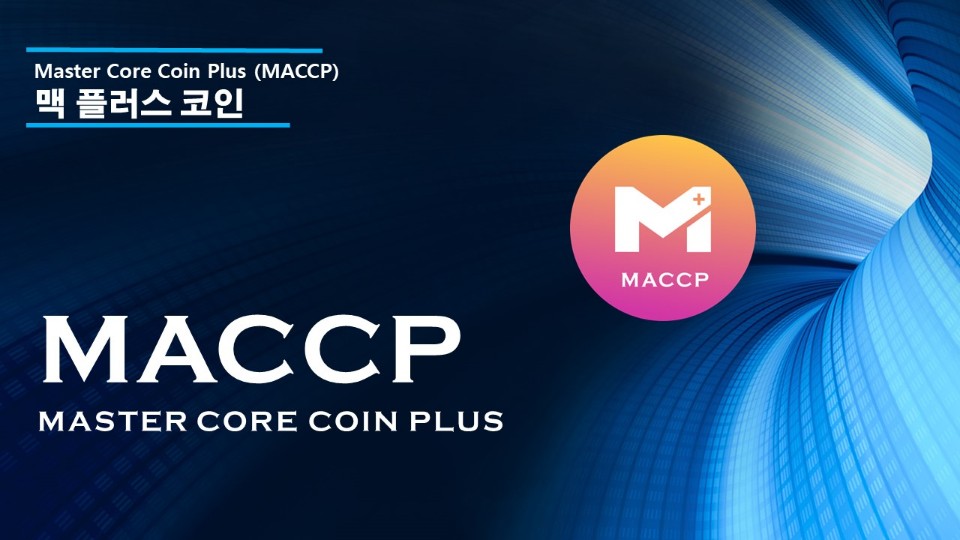What is The Primary Algorithm Used in Bitcoin Mining For More Profit?
Bitcoin mining is an essential part of how the Bitcoin network operates. It involves using powerful computers to solve complex problems that help verify transactions. The main tool miners use for this process is a special algorithm. In this article, we will discuss the primary algorithm used in Bitcoin mining, known as SHA-256, and why it is important for the security and efficiency of the Bitcoin network.
Key Takeaways
- The main algorithm for Bitcoin mining is SHA-256.
- SHA-256 helps keep Bitcoin transactions safe.
- Bitcoin uses a method called Proof of Work to confirm transactions.
- While there are other mining algorithms, SHA-256 is the most common for Bitcoin.
- Future developments in mining technology could change how Bitcoin operates.
Understanding Bitcoin Mining
Bitcoin mining is a crucial process that helps maintain the Bitcoin network. It involves validating transactions and adding them to the blockchain, ensuring that the system remains secure and trustworthy. Miners use powerful computers to solve complex mathematical problems, which allows them to confirm transactions and create new blocks in the blockchain. Here are some key points about Bitcoin mining:
- Transaction Verification: Miners check the accuracy of transactions before they are added to the blockchain.
- Blockchain Integrity: By adding new blocks, miners help keep the blockchain secure and unchangeable.
- Mining Rewards: Miners earn Bitcoin as a reward for their efforts, which incentivizes them to continue mining.
Bitcoin mining is essential for the security and functionality of the Bitcoin network, as it prevents fraud and ensures that all transactions are legitimate.
The mining process can be thought of as a competitive race where miners try to be the first to solve a problem. This competition is what keeps the network running smoothly and securely. As more miners join the network, the difficulty of the problems increases, making it more challenging to mine Bitcoin. This ensures that the system remains balanced and that new Bitcoins are released at a controlled rate.
The SHA-256 Algorithm in Bitcoin Mining
Features of SHA-256
SHA-256, which stands for Secure Hash Algorithm 256-bit, is a key part of Bitcoin mining. Here are some of its main features:
- Strong security: It is very hard to break, making it safe for transactions.
- Fixed output size: Regardless of the input size, it always produces a 256-bit hash.
- Collision resistance: It is extremely difficult to find two different inputs that produce the same output.
Why SHA-256 is Preferred
There are several reasons why SHA-256 is the go-to algorithm for Bitcoin mining:
- High security: It protects the network from attacks.
- Efficiency: It works well with specialized mining hardware called ASICs.
- Established trust: It has been used since Bitcoin’s creation, proving its reliability.
Challenges with SHA-256
While SHA-256 is effective, it does come with challenges:
- High energy consumption: Mining with SHA-256 requires a lot of electricity.
- Increasing difficulty: As more miners join, the difficulty of solving the puzzles increases.
- Centralization risk: The need for powerful hardware can lead to a few entities controlling most of the mining power.
The SHA-256 algorithm is essential for maintaining the security and integrity of the Bitcoin network, ensuring that transactions are verified and added to the blockchain securely.
Proof of Work: The Backbone of Bitcoin Mining
How Proof of Work Secures Bitcoin
Proof of Work, often called PoW, is a method used in Bitcoin to ensure that transactions are secure and verified. In this system, miners compete to solve complex math problems. The first one to solve it gets to add a new block to the blockchain and is rewarded with Bitcoin. This process helps keep the network safe and prevents fraud.
Comparing Proof of Work with Other Methods
Bitcoin uses Proof of Work for several reasons:
- Security: It makes it hard for anyone to cheat the system.
- Decentralization: No single person controls the network, making it fair for everyone.
- Incentives: Miners are rewarded for their work, encouraging them to keep the network running.
Energy Consumption and Environmental Impact
While PoW has its benefits, it also faces some challenges:
- Energy Consumption: Mining requires a lot of electricity, which can be harmful to the environment.
- Centralization Risks: If only a few miners control most of the power, it can lead to unfair practices.
- Scalability Issues: As more people use Bitcoin, the network can become slower and more expensive to use.
The world of Bitcoin mining is constantly changing, and miners must adapt to new technologies and challenges to stay competitive.
In summary, understanding the technical aspects of Bitcoin mining, including the hardware, software, and network difficulty, is crucial for anyone looking to participate in this digital gold rush. The right tools can make a significant difference in mining success.
Mining Hardware and Compatibility
ASICs and Their Role in Bitcoin Mining
Bitcoin mining relies heavily on specialized hardware known as ASICs (Application-Specific Integrated Circuits). These devices are designed specifically for mining Bitcoin using the SHA-256 algorithm. They are much more efficient than traditional hardware like CPUs and GPUs. Here are some key points about ASICs:
- High Efficiency: ASICs can perform billions of hashes per second.
- Energy Consumption: They are designed to use less power compared to other mining hardware.
- Cost: While they can be expensive, their efficiency often leads to better profits.
The Evolution from CPUs to ASICs
In the early days of Bitcoin, miners used regular computers with CPUs. However, as the difficulty of mining increased, these became less effective. The transition to ASICs marked a significant change in the mining landscape:
- CPUs: Initially used but became outdated quickly.
- GPUs: More powerful than CPUs but still not efficient enough for Bitcoin mining.
- ASICs: The current standard for Bitcoin mining, offering unmatched performance.
Personalizing Mining Algorithms
Miners can also customize their mining algorithms to suit their needs. This personalization can help improve efficiency and profitability. Here are some aspects that can be tailored:
- Power Consumption: Adjusting settings to use less energy.
- Hash Rate: Optimizing for faster processing.
- Algorithm Features: Modifying properties to enhance performance.
The mining hardware must be compatible with the chosen cryptocurrency’s algorithm to ensure profitable results. This compatibility is crucial for successful mining operations.
Summary
In summary, the evolution of mining hardware from CPUs to ASICs has transformed Bitcoin mining. ASICs are now the preferred choice due to their efficiency and performance. Personalizing mining algorithms can further enhance results, making it essential for miners to stay updated with the latest technology and practices.
Future of Bitcoin Mining Algorithms
Potential Changes and Upgrades
As the world of cryptocurrency continues to grow, we can expect new mining algorithms to emerge. These changes may lead to:
- Improved energy efficiency
- Faster transaction processing
- Enhanced security features
Impact of Quantum Computing
Quantum computing poses a significant challenge to current mining algorithms. As these computers become more powerful, they could potentially break the cryptographic security that protects Bitcoin. This has led to a pressing need for quantum-resistant algorithms to ensure the safety of the network.
The Need for Quantum-Resistant Algorithms
To prepare for the future, the Bitcoin community must focus on developing algorithms that can withstand quantum attacks. This includes:
- Researching new cryptographic methods
- Testing these methods in real-world scenarios
- Implementing changes to the Bitcoin protocol as needed
The future of Bitcoin mining will likely focus on balancing profitability with environmental responsibility. This shift is essential for the long-term success of the industry, especially as regulations tighten and public scrutiny increases.
In summary, the future of Bitcoin mining algorithms is not just about efficiency and speed; it also involves addressing environmental concerns and preparing for technological advancements like quantum computing. As miners adapt to these changes, the landscape of cryptocurrency mining will continue to evolve.
Comparing Bitcoin Mining Algorithms
When it comes to Bitcoin mining, various algorithms can be utilized, but SHA-256 is the primary choice. In this section, we will compare SHA-256 with other mining algorithms to understand their differences and impacts.
SHA-256 vs. Other Algorithms
- SHA-256: The main algorithm used in Bitcoin mining, known for its security and reliability.
- Scrypt: Used by Litecoin, it requires more memory, making it harder to mine with regular hardware.
- Ethash: This algorithm is used in Ethereum and is designed to be ASIC-resistant, promoting decentralization.
Efficiency and Speed Considerations
| Algorithm | Speed (Hashes/sec) | Energy Consumption (W) |
|---|---|---|
| SHA-256 | High | Moderate |
| Scrypt | Moderate | High |
| Ethash | Moderate | Moderate |
Impact on Energy Consumption
- Bitcoin mining using SHA-256 is energy-intensive, but it is more efficient than some alternatives.
- Other algorithms like Scrypt can consume even more energy, raising concerns about sustainability.
- The choice of algorithm can significantly affect the overall energy footprint of mining operations.
The choice of mining algorithm not only affects the efficiency of mining but also has a significant impact on the environment.
In summary, while SHA-256 remains the dominant algorithm for Bitcoin mining, understanding the differences with other algorithms helps in evaluating their efficiency, speed, and energy use. This knowledge is crucial for miners and those interested in the future of cryptocurrency mining.
Conclusion
In conclusion, the algorithm used in Bitcoin mining is very important. It affects how secure and efficient the Bitcoin network is. The main algorithm, SHA-256, helps keep transactions safe and ensures that the network runs smoothly. While there are other algorithms out there, SHA-256 is the most popular for Bitcoin. As technology changes, we might see new and better algorithms in the future, which could make Bitcoin even more effective.
Frequently Asked Questions
What is Bitcoin mining?
Bitcoin mining is the process of using computers to solve tough math problems. This helps confirm transactions and add them to the Bitcoin network.
What algorithm is mainly used in Bitcoin mining?
The main algorithm used in Bitcoin mining is called SHA-256. It helps keep the network secure.
How does SHA-256 work?
SHA-256 takes data and turns it into a unique code called a hash. This hash is very hard to guess, which keeps transactions safe.
What is Proof of Work?
Proof of Work is a method that Bitcoin uses to confirm transactions. Miners must solve math puzzles to prove they did the work.
Why is decentralization important in Bitcoin?
Decentralization means that no single person or group controls Bitcoin. This makes it safer and fairer for everyone.
What are ASICs in Bitcoin mining?
ASICs are special computers designed for Bitcoin mining. They are very efficient and help miners solve problems faster.
Stay informed with daily updates from Blockchain Magazine on Google News. Click here to follow us and mark as favorite: [Blockchain Magazine on Google News].
Get Blockchain Insights In Inbox
Stay ahead of the curve with expert analysis and market updates.
latest from tech
Disclaimer: Any post shared by a third-party agency are sponsored and Blockchain Magazine has no views on any such posts. The views and opinions expressed in this post are those of the clients and do not necessarily reflect the official policy or position of Blockchain Magazine. The information provided in this post is for informational purposes only and should not be considered as financial, investment, or professional advice. Blockchain Magazine does not endorse or promote any specific products, services, or companies mentioned in this posts. Readers are encouraged to conduct their own research and consult with a qualified professional before making any financial decisions. The featured image used is just a creative depiction of the title and it does not intend to hurt sentiments of any person or institution. If it hurts anyone sentiments, please do not hesitate to reach out to Blockchain Magazine.

 Bitcoin
Bitcoin  Ethereum
Ethereum  XRP
XRP  Tether
Tether  Solana
Solana  Dogecoin
Dogecoin  USDC
USDC  Cardano
Cardano  Lido Staked Ether
Lido Staked Ether  TRON
TRON  Chainlink
Chainlink  Avalanche
Avalanche  Wrapped stETH
Wrapped stETH  Stellar
Stellar  Wrapped Bitcoin
Wrapped Bitcoin  Sui
Sui  Hedera
Hedera  Toncoin
Toncoin  Shiba Inu
Shiba Inu  WETH
WETH  Polkadot
Polkadot  Parkcoin
Parkcoin  LEO Token
LEO Token  Litecoin
Litecoin  Bitcoin Cash
Bitcoin Cash  Bitget Token
Bitget Token  Uniswap
Uniswap  Official Trump
Official Trump  Hyperliquid
Hyperliquid  Wrapped eETH
Wrapped eETH  Pepe
Pepe  USDS
USDS  NEAR Protocol
NEAR Protocol  Ethena USDe
Ethena USDe  Aave
Aave  Aptos
Aptos  Internet Computer
Internet Computer  Ondo
Ondo  Ethereum Classic
Ethereum Classic  Monero
Monero  POL (ex-MATIC)
POL (ex-MATIC)  OKB
OKB  Cronos
Cronos  Mantle
Mantle  Dai
Dai  Algorand
Algorand  MANTRA
MANTRA  Render
Render 




